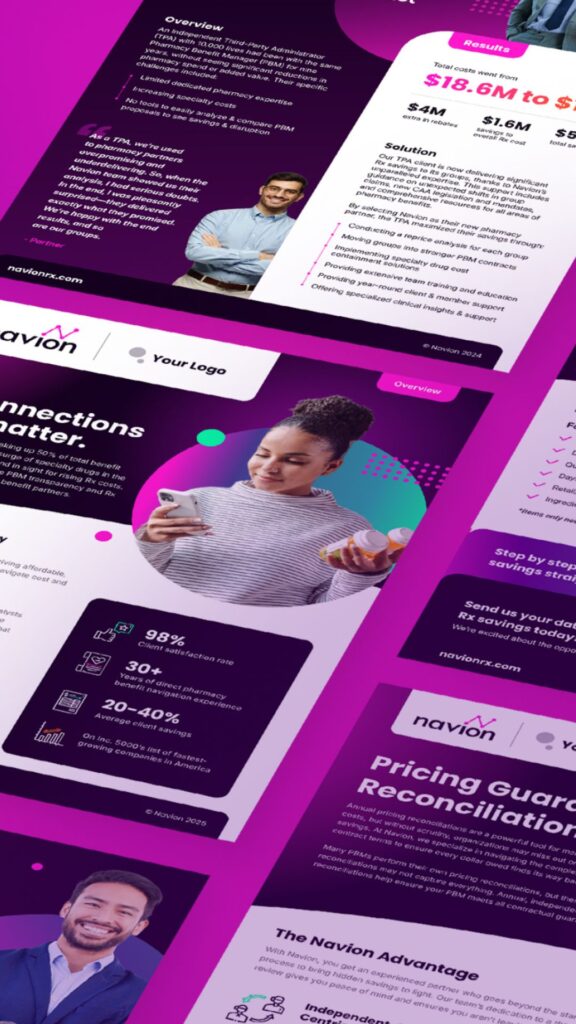By: Kevin Kobielski, President of Navion
For years, the pharmacy benefits conversation has revolved around unit costs, rebates, and discounts. And understandably so—when drugs like Humira and GLP-1s can cost thousands per month per patient, every percentage point matters. But employers are beginning to ask a different question: not just what are we paying—but what are we paying for? That shift is long overdue.
The Old Math Is Losing Ground
The traditional approach to PBM contracting focused heavily on the financials:
- How big are the rebates?
- What’s the admin fee?
- Are the discounts competitive?
But those numbers are no longer the whole picture. Especially when a $3,000 drug might have the same efficacy and outcomes as a $12,000 one—or when early discontinuation of a specialty med leads to tens of thousands in wasted spend.
Today’s rising trend: rebalancing the equation to include clinical performance, patient adherence, and real-world outcomes.
Clinical Levers That Actually Work
One of the most effective ways to manage drug spend long-term is to ensure the right drug is being used for the right person, at the right time. That means building a PBM strategy around more than rebates. It means looking at:
- Formulary integrity – Does the plan steer members toward the most clinically appropriate, lowest-cost options?
- Step therapy – Are members starting with effective, lower-cost treatments before escalating?
- Quantity limits – Are drugs dispensed in safe and cost-conscious volumes (e.g., 30-day vs. 90-day fills for high-risk specialty meds)?
- Prior authorization – Is there a process to verify clinical necessity, not just payor policy?
- Physician detailing and outreach – Are providers being engaged to support more cost-effective prescribing behavior?
These strategies can reduce waste, protect patients, and enable smarter spend—regardless of the PBM’s pricing model.
Why Formulary Strategy is Ground Zero
All clinical programs stem from the formulary. A well-designed formulary doesn’t just control cost—it shapes outcomes.
It ensures:
- Biosimilars are preferred when clinically appropriate
- High-cost drugs with low marginal value are deprioritized
- GLP-1s and other trend-driving medications are managed thoughtfully, not reactively
Without this foundation, even the most advanced clinical add-ons will struggle to deliver real results.
It’s Not Just About Spending Less—It’s About Spending Smarter
The rise in specialty medication costs has been staggering—but it’s not always unjustified. In cases like cancer or MS, these drugs offer meaningful and much needed clinical value. The question becomes: is the plan managing that value effectively?
Employers should be asking:
- Are we paying for waste?
- Are members getting therapies they can’t tolerate—or don’t stick with?
- Do our clinical controls support better care?
The Future Will Belong to Groups That Treat Pharmacy as Health Strategy
Ten years from now, the most successful pharmacy strategies won’t be built around the deepest rebates or the lowest admin fees. They’ll be built around clinical design. Plans that focus on medication appropriateness, patient engagement, and therapeutic outcomes will be better positioned to control cost without sacrificing care.
That future starts by making clinical management—not just pricing—the centerpiece of PBM evaluation today.









